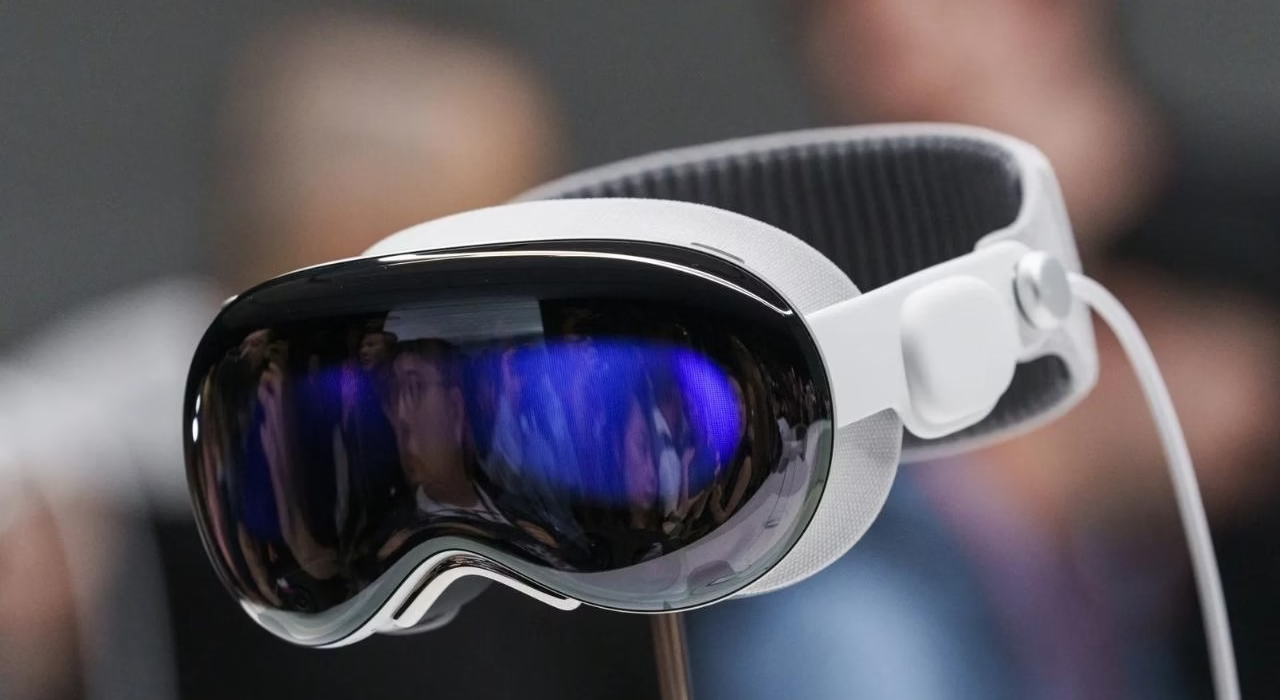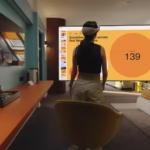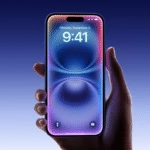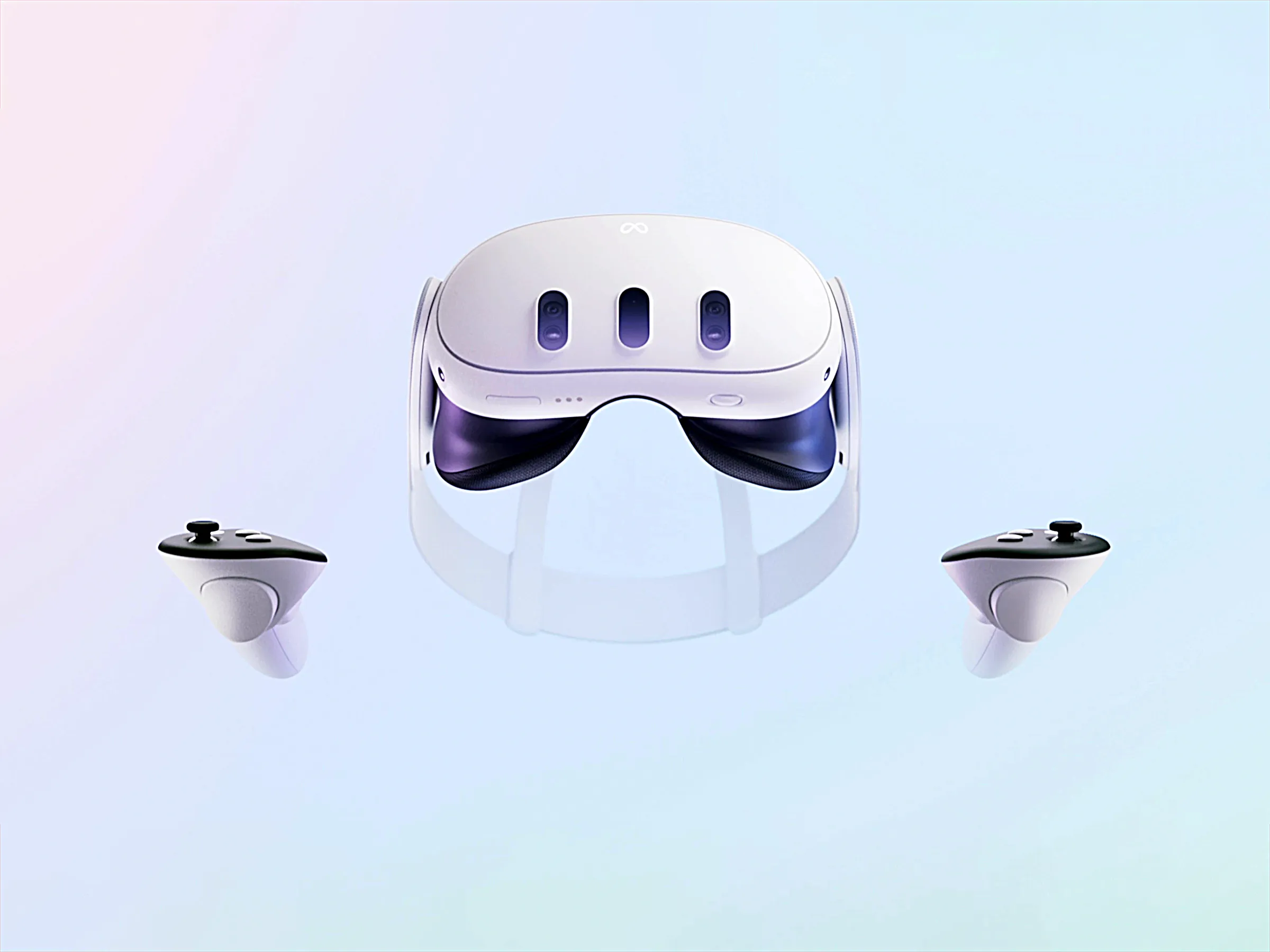The Apple Vision Pro AI Integration: A New Chapter in Spatial Computing
Estimated reading time: 8 minutes
Key Takeaways
- The Apple Vision Pro is more than just a headset; it’s a sophisticated spatial computer powered by advanced AI.
- AI is fundamental to the Vision Pro’s ability to understand and interact with the user’s environment and input.
- The integration of Apple Intelligence, particularly in visionOS 2.4, marks a significant leap in AI-driven user experiences.
- Features like Writing Tools, Image Playground, and Spatial Gallery showcase the practical applications of AI in enhancing creativity and productivity.
- The advancements in the Vision Pro are setting a precedent for the future of Apple’s XR headset technology and the broader mixed reality landscape.
Table of contents
- The Apple Vision Pro AI Integration: A New Chapter in Spatial Computing
- Key Takeaways
- Defining Apple’s Spatial Computer: The Vision Pro
- The AI Underpinning the Vision Pro Experience
- The Dawn of a New Chapter: Immediate AI-Driven Enhancements
- Envisioning the Future: AI in Next-Generation XR
- Broader Impacts and the AI-Driven Mixed Reality Revolution
- Final Thoughts
- Frequently Asked Questions
The technological world is abuzz with anticipation for what comes next, and at the forefront of this excitement is **Apple’s spatial computer Vision Pro**. This groundbreaking device is poised to redefine how we interact with digital information and the world around us. This blog post will delve into the **Apple Vision Pro AI integration new chapter**, exploring its profound implications for the **future of Apple’s XR headset technology**. In an era where artificial intelligence is rapidly transforming industries, understanding the **impact of AI on mixed reality devices** is crucial for grasping the true potential of spatial computing.

Defining Apple’s Spatial Computer: The Vision Pro
To truly appreciate the AI integration, we must first understand what is meant by **Apple’s spatial computer Vision Pro**. It is not merely a virtual reality headset or an augmented reality device; it is a sophisticated platform that creates, understands, and interacts with the world in three dimensions. The Vision Pro seamlessly blends digital content with the physical environment, offering an experience that feels both natural and immersive. This is achieved through a combination of cutting-edge hardware and intelligent software. The foundational hardware includes multiple cameras, advanced sensors, and exceptionally high-resolution displays, all working in concert to capture and render the user’s surroundings with remarkable fidelity. The sophisticated software architectures are equally vital, enabling real-time tracking of the user’s eyes, hands, and the environment itself. This intricate dance of hardware and software is what defines its spatial computing capabilities. Crucially, artificial intelligence plays a foundational role in enhancing this spatial experience. AI algorithms interpret what users see, where they are looking, and how they interact with their surroundings, making spatial computing more intuitive and responsive than ever before. It’s this intelligent interpretation that allows digital elements to feel like a natural extension of our physical reality.
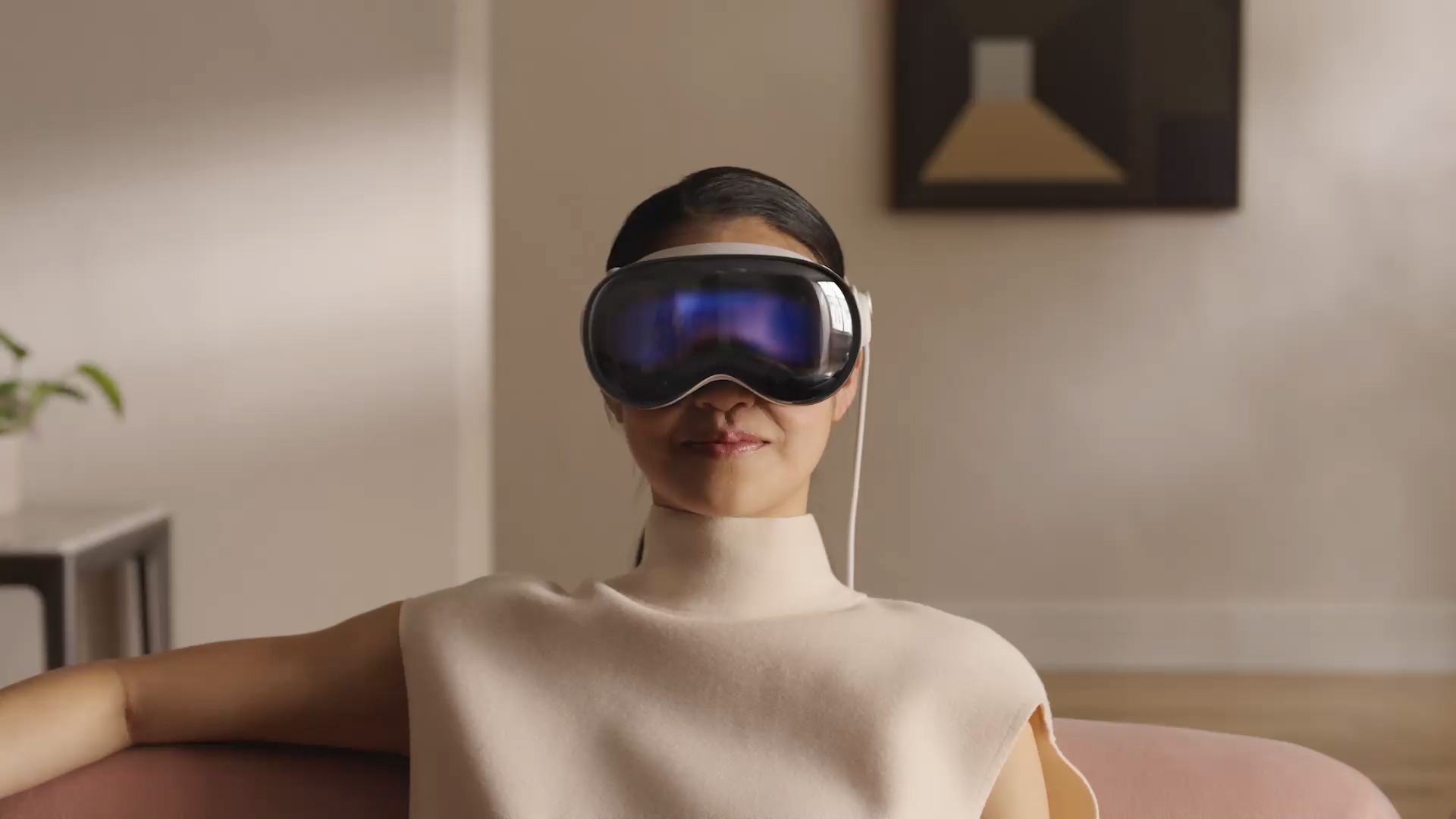
The AI Underpinning the Vision Pro Experience
The magic of the Vision Pro is deeply rooted in its advanced AI technologies. These aren’t just add-on features; they are the core components that enable its intuitive and powerful user experience. Among the key AI technologies integrated into the Vision Pro are:
- Machine Learning: This forms the backbone of many of the Vision Pro’s interactive features. Machine learning algorithms are responsible for interpreting complex user gestures and understanding the nuances of environmental context. By learning from user interactions and environmental data, the device can predict intent and respond with remarkable accuracy.
- Computer Vision: Essential for any device that aims to blend digital and physical worlds, computer vision enables the Vision Pro to understand, map, and anchor digital objects within the user’s environment. This technology allows virtual elements to appear as if they are truly present in the real world, interacting realistically with physical surfaces and lighting.
- Natural Language Processing (NLP): To facilitate seamless interaction, the Vision Pro heavily relies on NLP. This allows for intuitive dictation, sophisticated voice commands, and efficient content creation. Users can communicate their intentions to the device using natural language, making the interaction feel less like operating a machine and more like collaborating with an intelligent assistant.

These AI components are not merely supplementary; they are crucial for the device’s core functionalities, contributing significantly to the overall **impact of AI on mixed reality devices**. Without these intelligent systems, the Vision Pro would struggle to achieve its promise of an integrated, intuitive spatial computing experience. The ability to process and understand complex data in real-time is what elevates the Vision Pro from a piece of hardware to an intelligent spatial companion.
The Dawn of a New Chapter: Immediate AI-Driven Enhancements
The **Apple Vision Pro AI integration new chapter** is not a distant future concept; it is actively shaping the current user experience in profound ways. Apple’s commitment to integrating AI is evident in the suite of features that enhance productivity, creativity, and daily interaction. Let’s explore some concrete examples of these AI-powered advancements:
- Eye and Hand Tracking: One of the most lauded features of the Vision Pro is its sophisticated eye and hand tracking. AI interprets subtle gestures and gaze, facilitating touch-free, intuitive controls. This allows users to navigate interfaces, select items, and perform actions simply by looking and gesturing, creating a seamless and natural interaction model.
- Environment Understanding: The device uses AI to map and comprehend real-world surroundings. This environment understanding capability is critical, as it allows applications to dynamically adapt to the user’s physical space. For instance, digital objects can be anchored to real-world surfaces, appearing to occupy the same physical space as the user, leading to more believable and immersive experiences. This also enables apps to provide context-aware information and interactions based on the user’s location and surroundings.
- Intelligent App Interactions: Natural language processing and content suggestion features streamline productivity and creative tasks within applications. Imagine drafting an email or a document where AI offers suggestions for wording, grammar, and even content generation, all driven by the context of your work and your prior interactions. This intelligent assistance can significantly boost efficiency and unlock new creative possibilities.
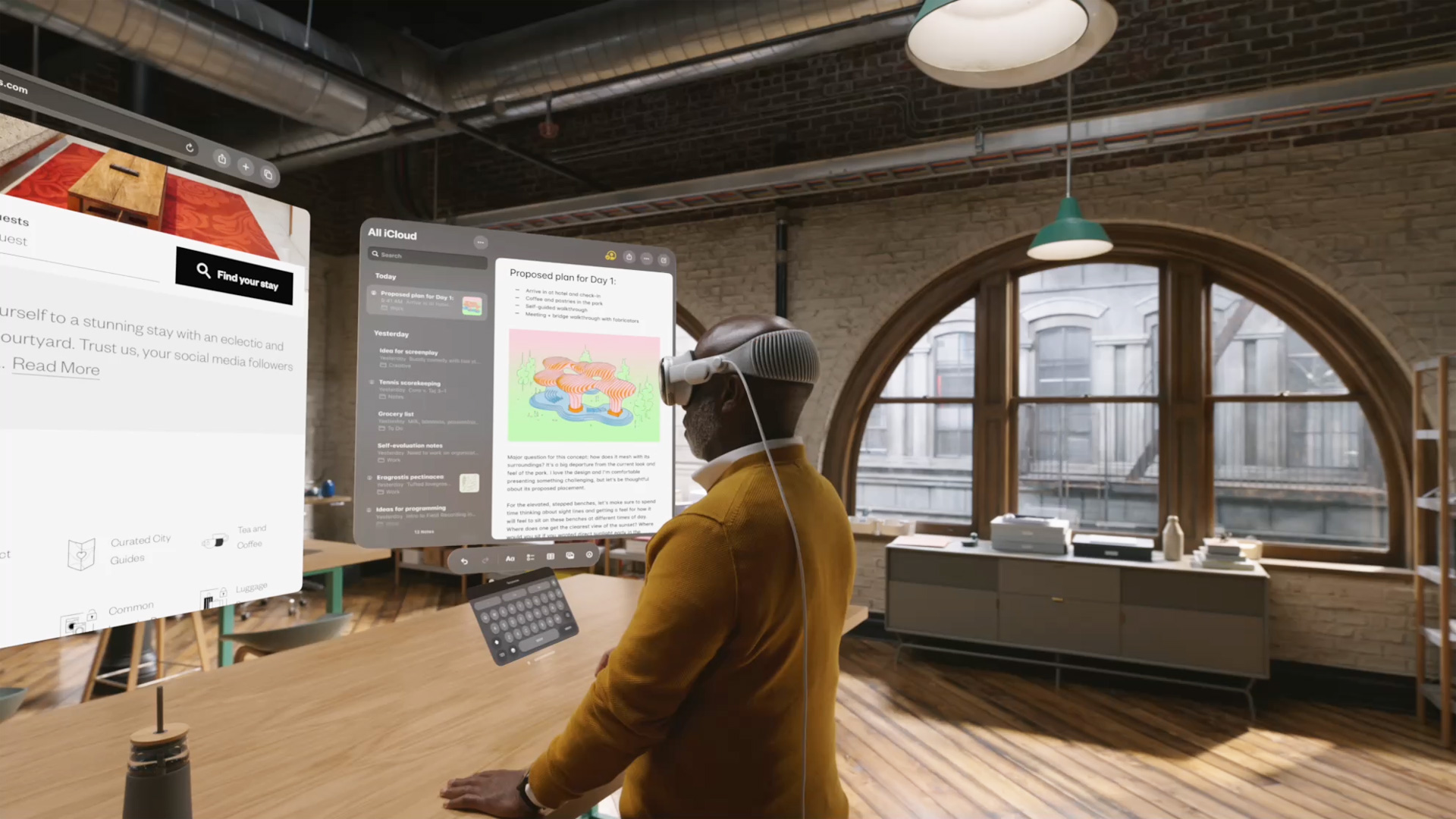
A significant catalyst for these advancements is the introduction of **Apple Intelligence** within visionOS 2.4. This system-wide integration of AI capabilities is designed to be deeply helpful and context-aware. Specifically, the **Writing Tools** feature allows users to effortlessly rewrite, proofread, summarize, and compose text across various applications. This capability, powered by sophisticated AI models, transforms the way users interact with written content, making communication more effective and less time-consuming. Furthermore, the integration of **ChatGPT** for system-wide content generation provides users with an even more powerful tool for creating and refining text, opening up new avenues for creative expression and problem-solving.
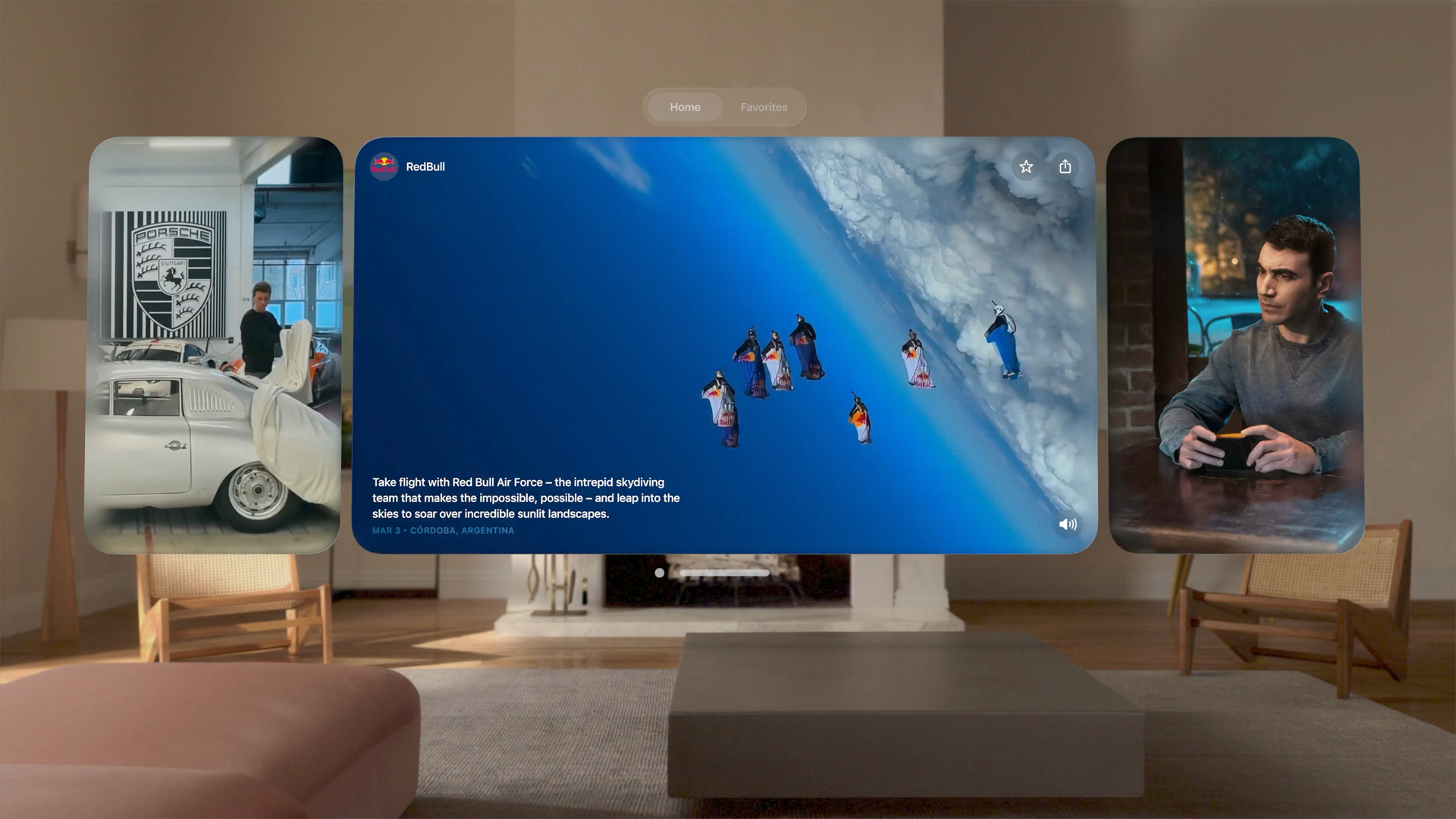
Beyond text, Apple’s AI prowess extends to visual creation with **Image Playground**. This feature allows for unparalleled visual expression and the creation of “Genmoji”—unique, AI-generated emojis that can be tailored to individual preferences and contexts. This not only adds a fun and personal dimension to communication but also showcases the potential of generative AI in creative endeavors. Complementing these features is the **Spatial Gallery**, a curated space for spatial photos and videos. This demonstrates Apple’s commitment to enhancing content creation and consumption, making it more immersive and engaging through AI. The focus here is on creating and experiencing content in a way that leverages the three-dimensional nature of the Vision Pro, further solidifying the **impact of AI on mixed reality devices**.

Envisioning the Future: AI in Next-Generation XR
The current AI integration in the Vision Pro is impressive, but it also serves as a powerful indicator of what’s to come. Speculating on the evolution of AI within future iterations of Apple’s XR technology, we can anticipate even more profound advancements, hinting at exciting **Apple Vision Pro 2 AI capabilities**. The trajectory suggests a continuous refinement and expansion of AI’s role, leading to experiences that are more personalized, contextually aware, and powerfully creative.
Anticipated advancements are likely to include:
- More advanced personalization: AI will likely learn user preferences and behaviors at a deeper level, tailoring the XR experience to individual needs and styles. This could mean customized interfaces, personalized content recommendations, and adaptive learning environments.
- Deeper context awareness: Future AI systems will likely possess an even more nuanced understanding of the user’s environment, their emotional state, and their ongoing tasks. This will enable proactive assistance and more seamless integration of digital information into daily life.
- Enhanced content creation tools: Building on current capabilities, AI will likely offer more sophisticated tools for creating 3D content, immersive experiences, and interactive narratives. Developers and creators will have access to powerful generative AI models that can assist in every stage of content production.
- More lifelike, responsive digital avatars: As AI models become more advanced, we can expect digital avatars to become more realistic and responsive, capable of nuanced expressions and natural interactions, enhancing social and collaborative experiences in the metaverse.

Furthermore, generative AI is poised to expand significantly, moving beyond simple content creation to building dynamic spatial scenes, generating entire interactive environments, and facilitating more immersive shared experiences. This will be complemented by new developer APIs that allow third-party creators to leverage these powerful AI capabilities, significantly shaping the **future of Apple’s XR headset technology**. The potential for AI to democratize content creation and enable entirely new forms of digital interaction is immense. As we look towards devices like the iPhone 17 Pro and its potential camera upgrades hinting at AI future, it’s clear that AI will be a pervasive element across Apple’s ecosystem, with XR devices serving as a primary interface for many of these innovations.
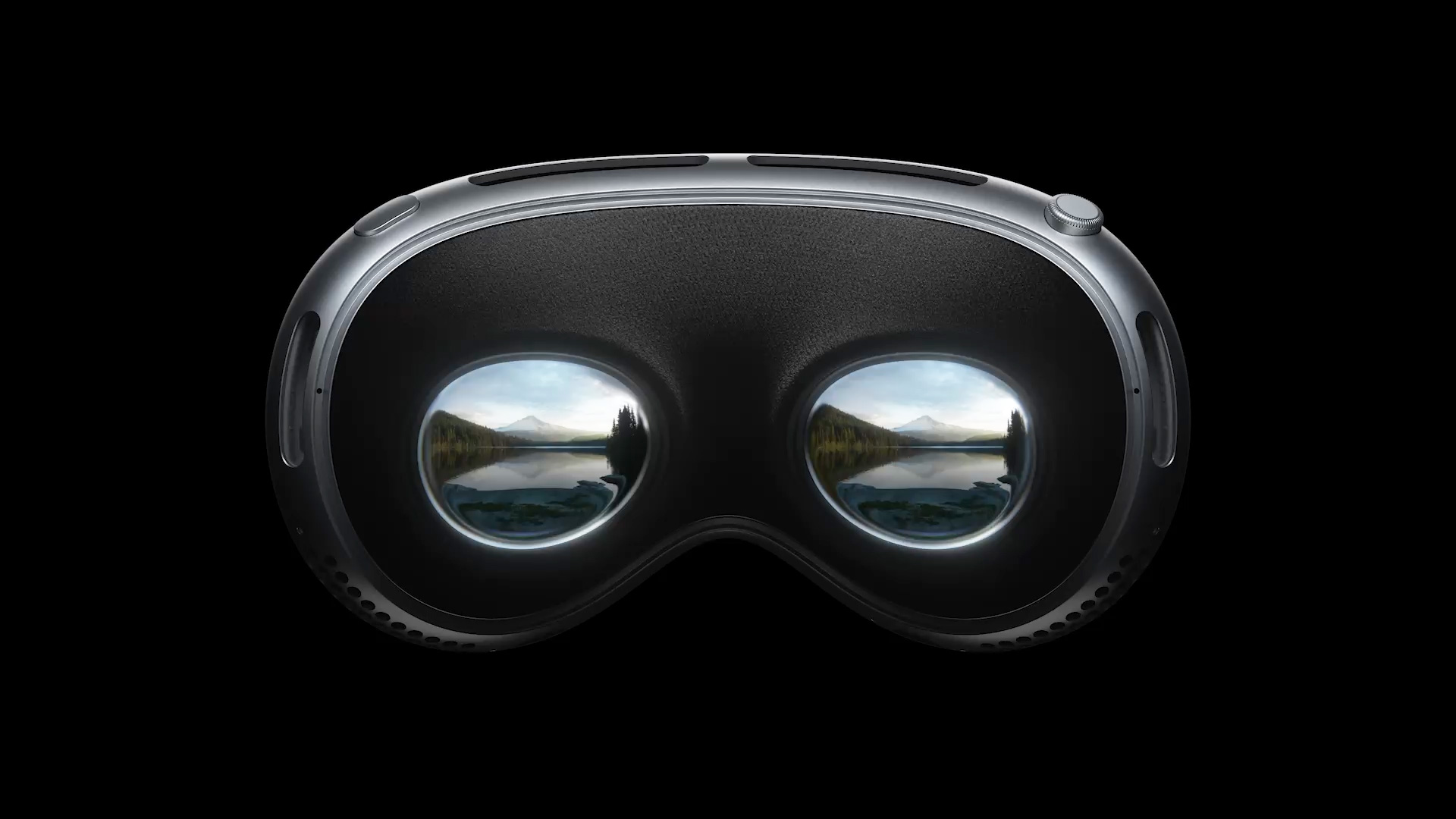
Broader Impacts and the AI-Driven Mixed Reality Revolution
The advancements seen in the Apple Vision Pro are not isolated to a single device; they represent a significant shift with broader **impact of AI on mixed reality devices** beyond Apple’s own ecosystem. Apple’s pioneering work is acting as a powerful catalyst for industry-wide transformation, pushing the boundaries of what is possible in mixed reality. The sophisticated AI-powered spatial computing, exemplified by this **Apple Vision Pro AI integration new chapter**, has the potential to revolutionize numerous sectors, fundamentally changing how we work, learn, and entertain ourselves.
Consider the potential impact across various domains:
- Entertainment: Imagine immersive games that adapt to your real-time reactions, or cinematic experiences where digital characters interact seamlessly with your physical environment.
- Productivity: AI-driven virtual workspaces could offer unparalleled flexibility and collaboration tools, allowing teams to interact with data and design in a shared spatial context, regardless of their physical location.
- Education: Students could engage with historical events as if they were there, explore complex scientific concepts through interactive 3D models, or practice intricate surgical procedures in a safe, simulated environment.
- Healthcare: Surgeons could utilize AI-powered overlays during operations, providing real-time patient data and guidance. Therapists might employ immersive environments for treating phobias or PTSD, with AI adjusting scenarios based on patient progress.

Apple’s high standards for performance, privacy, and user-centric design in AI-powered spatial computing are setting a benchmark for the entire industry. By prioritizing these aspects, Apple is not only pushing the boundaries of what mixed reality can achieve but also ensuring that these powerful technologies deliver unprecedented value across these diverse domains. The rapid rollout of AI features in the Vision Pro is a testament to Apple’s commitment to innovation. These developments are not just reinventing their product line but are also accelerating the **future of Apple’s XR headset technology**, inspiring competitors and fostering a more robust and innovative mixed reality market overall. The synergy between AI and spatial computing, as demonstrated by the Vision Pro, is poised to redefine human-computer interaction for decades to come.
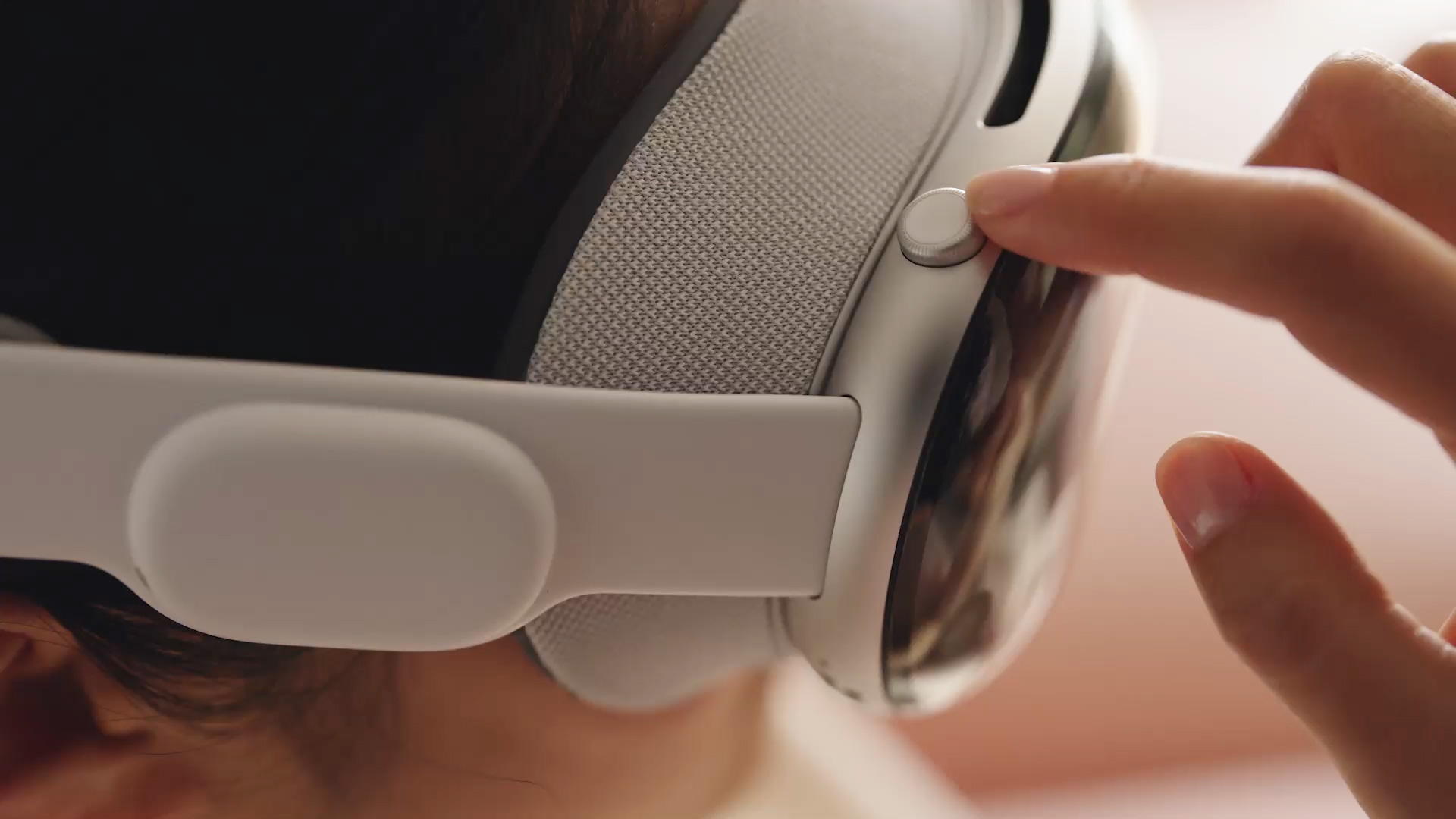
Final Thoughts
The **Apple Vision Pro AI integration new chapter** truly signifies a major leap forward in the realm of spatial computing. The device is not merely an iteration of existing technology but a foundational platform that leverages artificial intelligence to create experiences that are intuitive, immersive, and deeply integrated with our physical world. The key advancements driven by AI, from sophisticated eye and hand tracking to intelligent content creation tools, underscore Apple’s vision for the future of human-computer interaction. The **Apple Vision Pro AI integration new chapter** is a testament to the power of AI to enhance our capabilities and redefine our digital interactions.

The **Apple Vision Pro AI integration new chapter** marks a pivotal moment, showcasing how AI is not just an enhancement but an integral component of next-generation computing. As we continue to explore the potential of this groundbreaking device, it is clear that **Apple’s spatial computer Vision Pro** is ushering in a new era of immersive technology. The ongoing development and integration of AI promise an exciting trajectory for the **future of Apple’s XR headset technology**, one that will undoubtedly shape how we interact with technology and the digital world.


Frequently Asked Questions
What are the primary AI technologies powering the Apple Vision Pro?
The Apple Vision Pro is powered by machine learning for gesture and context interpretation, computer vision for environmental understanding and digital object anchoring, and natural language processing for voice commands and dictation. These technologies work in synergy to create an intuitive spatial computing experience.
How does Apple Intelligence enhance the Vision Pro experience?
Apple Intelligence, integrated into visionOS 2.4, enhances the Vision Pro by providing system-wide AI capabilities. Features like Writing Tools for text manipulation, Image Playground for visual creation, and system-wide ChatGPT integration for content generation significantly improve productivity and creativity.
Can you provide examples of AI-driven features on the Vision Pro?
Yes, key AI-driven features include advanced eye and hand tracking for touch-free controls, environment understanding that allows digital objects to integrate realistically with the physical space, and intelligent app interactions that offer content suggestions and streamlined workflows.
What is the expected impact of AI on the future of Apple’s XR headset technology?
AI is expected to drive more advanced personalization, deeper context awareness, enhanced content creation tools, and more lifelike digital avatars in future XR headsets. Generative AI will likely play a significant role in creating dynamic spatial scenes and immersive shared experiences.
How does the Vision Pro’s AI integration compare to other mixed reality devices?
While other mixed reality devices also utilize AI, Apple’s approach emphasizes a deep, system-wide integration focused on intuitive user interaction, seamless blending of digital and physical realities, and robust privacy measures. The specific implementation of features like advanced hand tracking and contextual understanding sets a high bar for the **impact of AI on mixed reality devices**.
Will AI capabilities improve over time with software updates?
Yes, Apple has a strong track record of improving device capabilities through software updates. Features like Apple Intelligence are designed to evolve and become more powerful over time, meaning that the AI capabilities of the Vision Pro will likely see significant enhancements through future updates, potentially including new features related to the iOS 18 ecosystem and beyond.
What are the privacy implications of AI on the Vision Pro?
Apple has emphasized a privacy-first approach to AI. Data processed for features like Apple Intelligence is often handled on-device or with anonymization techniques, ensuring user privacy remains a priority. This commitment is crucial for building trust in AI-powered devices.


